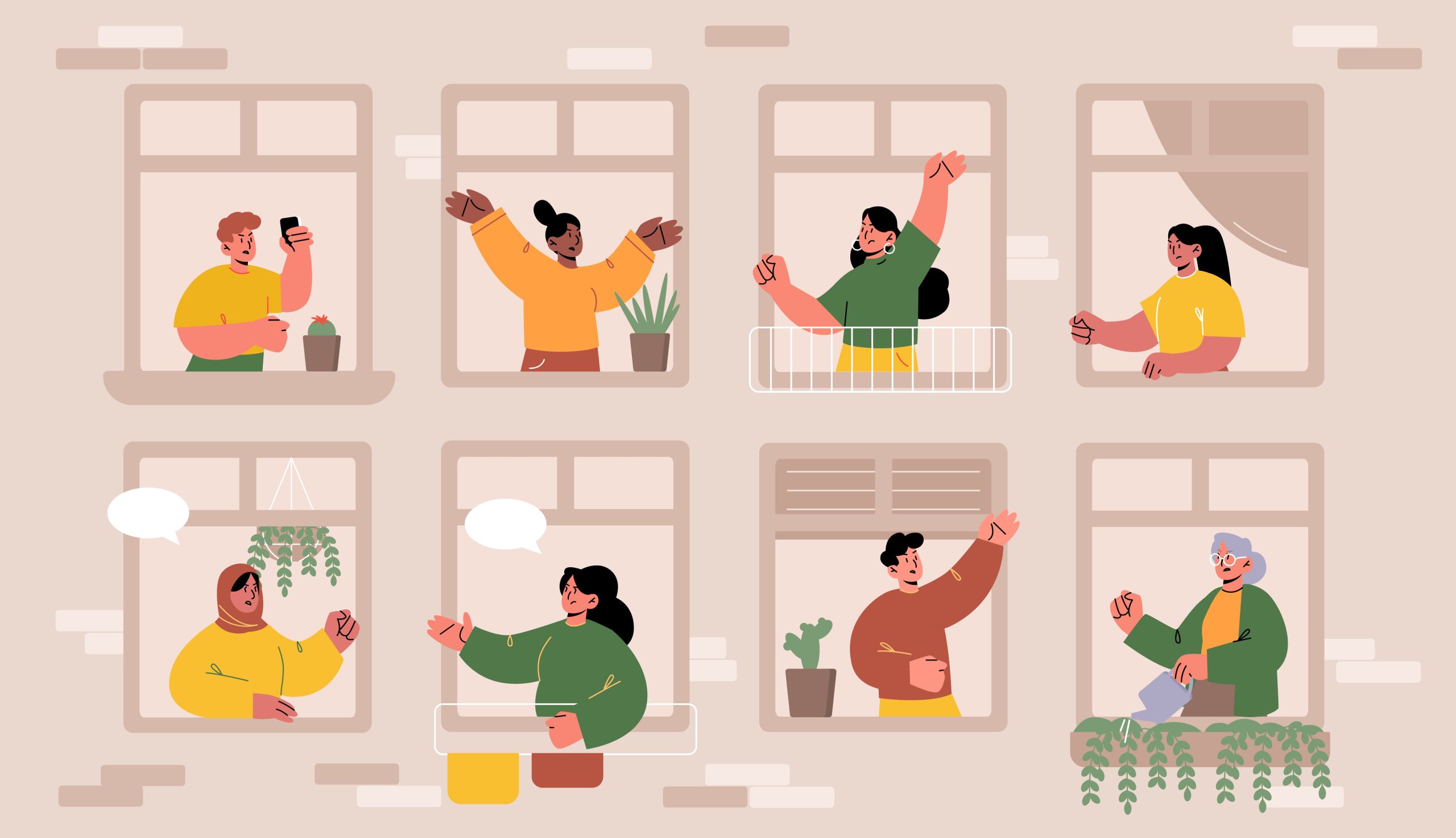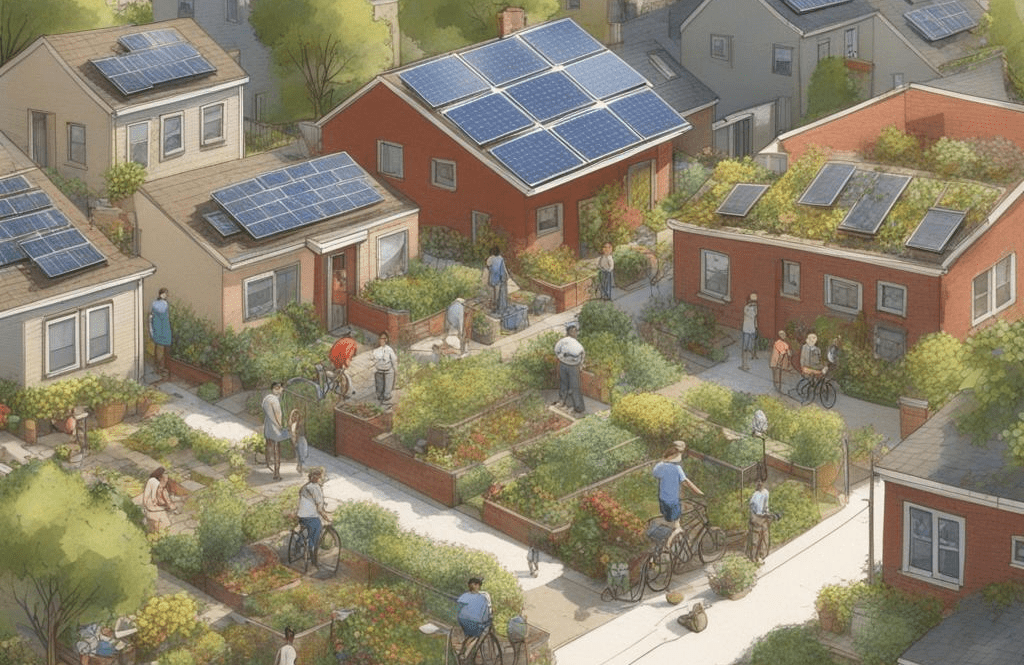Neighbors – they’re more than just the folks next door; they’re the backdrop to our everyday lives, the ones who share our highs and lows. As we hop across borders, the dynamics of neighborly interactions evolve, entwined with the threads of culture, tradition, and regional norms.
The Melting Pot of Etiquette – USA’s Neighborly Affair
Stepping into the tapestry of the United States, a land forged by diversity, the nuances of neighborly etiquette are as varied as the stars in its flag.
Mind the Fence – Boundaries and Beyond
Greetings Galore – A warm smile and a nod work wonders, but don’t hesitate to strike up a casual conversation. Americans value a friendly “hello” or “how are you?” in passing. Privacy is Key – Respect personal space. While camaraderie is cherished, uninvited intrusion might ruffle feathers. Always knock before entering someone’s home. Community Spirit – Pitching in during local events and lending a hand when needed cultivates goodwill. Barbecue invitations and neighborhood potlucks are chances to bond.
Steering Clear of Faux Pas
Nosiness ≠ Friendliness – While curiosity is natural, prying into personal matters isn’t. Avoid asking overly personal questions, especially about finances or relationships. Respecting Diversity – The U.S. is a cultural mosaic. Embrace differences in race, religion, and lifestyle. Offensive comments or stereotypes can lead to strained relations.
European Elegance – Navigating Neighborly Customs
Across the Atlantic, Europe beckons with its rich history, diverse traditions, and unique neighborly codes.
Neighborly Gestures – From Alps to Mediterranean
Bonjour, Ciao, Guten Tag – Greetings are serious business in Europe. Learning the local language’s basic greetings – whether it’s a “bonjour,” “ciao,” or “guten tag” – is a nod of respect. Culinary Bonds – Offering a plate of cookies or a slice of homemade cake transcends borders. Sharing a culinary creation is akin to sharing a piece of one’s heart. Respecting Quiet Hours – Many European cities adhere to quiet hours during the day and night. Keeping noise levels down, particularly during these hours, is a mark of consideration.
The Tangled Web of Etiquette
The Art of Punctuality – In Europe, timeliness is more than politeness; it’s a statement of respect. If an invitation states a specific time, it’s expected to be followed closely. Dress Decoded – Different regions embrace different dress codes. Research the cultural norms to avoid feeling out of place or accidentally causing offense. Mind the Volume – Conversational tones differ. While Americans might be accustomed to a louder pitch, many European conversations are conducted in hushed tones, reflecting a sense of discretion.
Harmonious Coexistence – Practical Tips for Culturally Diverse Neighborhoods
Living in a culturally diverse neighborhood can be a rewarding experience, filled with opportunities to learn, connect, and grow. Here are some practical tips to help foster harmonious coexistence among neighbors from different cultures-
Embrace Open Communication
Communication is the cornerstone of any thriving community. Be open to conversations that bridge cultural gaps. Ask questions, listen actively, and share stories. Through these interactions, you’ll not only gain insight into your neighbors’ lives but also build a foundation of mutual understanding.
Celebrate Cultural Festivals Together
Participating in each other’s cultural festivals can be a beautiful way to bond. Attend local celebrations, share traditional dishes, and learn about the significance of these events. By celebrating together, you’re showing respect for each other’s heritage.
Respect for Quiet Hours
Respecting the quiet hours of your neighborhood is an important gesture of consideration. In many cultures, quiet hours are observed to allow for rest and reflection. Being mindful of noise levels during these times helps create a peaceful environment for everyone.
Share Gardening Tips and Practices
Gardening is a universal language that transcends boundaries. Share gardening tips, exchange seeds or cuttings, and create a colorful and diverse landscape that mirrors your neighborhood’s cultural tapestry.
Offer Assistance When Needed
Whether it’s helping with grocery shopping, offering a ride, or assisting with household tasks, lending a hand to your neighbors can strengthen the sense of community. Acts of kindness know no cultural barriers.
Organize Cultural Exchange Events
Host cultural exchange events where neighbors can showcase their traditions. This could include cooking classes, art exhibitions, or dance performances. Such events provide an opportunity to appreciate the beauty of different cultures.
Language Learning Exchange
Learning a few basic phrases in your neighbors’ languages can go a long way in fostering connections. Consider organizing language exchange sessions where neighbors can teach each other phrases and idioms.
Respect for Dietary Preferences
Be mindful of dietary preferences and restrictions. If you’re inviting neighbors over for a meal, inquire about their food choices to ensure everyone feels comfortable and included.
Offer a Helping Hand During Celebrations
During celebrations, offer to help with preparations or clean-up. Whether it’s a wedding, a holiday, or a religious event, your willingness to assist showcases your respect for their customs.
Engage Children in Cultural Learning
If you have children, involve them in learning about different cultures. Read books, watch documentaries, and engage in age-appropriate conversations that promote tolerance and understanding.
By implementing these practical tips, you’re not just cultivating a harmonious neighborhood; you’re contributing to a microcosm of global unity. As different cultures converge in a shared space, the beauty lies in the diverse threads that weave together, creating a tapestry of belonging and coexistence.
It’s about recognizing that the world is rich with traditions, perspectives, and histories that shape our neighbors’ lives. As we open our hearts and homes to this diversity, we’re not just learning about others – we’re discovering facets of ourselves that we might never have encountered otherwise.
So, go forth with open minds and compassionate hearts. Embrace the opportunity to learn, grow, and forge lasting connections with neighbors from all corners of the world. For in doing so, you’re not just shaping your neighborhood – you’re shaping the future we all share.




